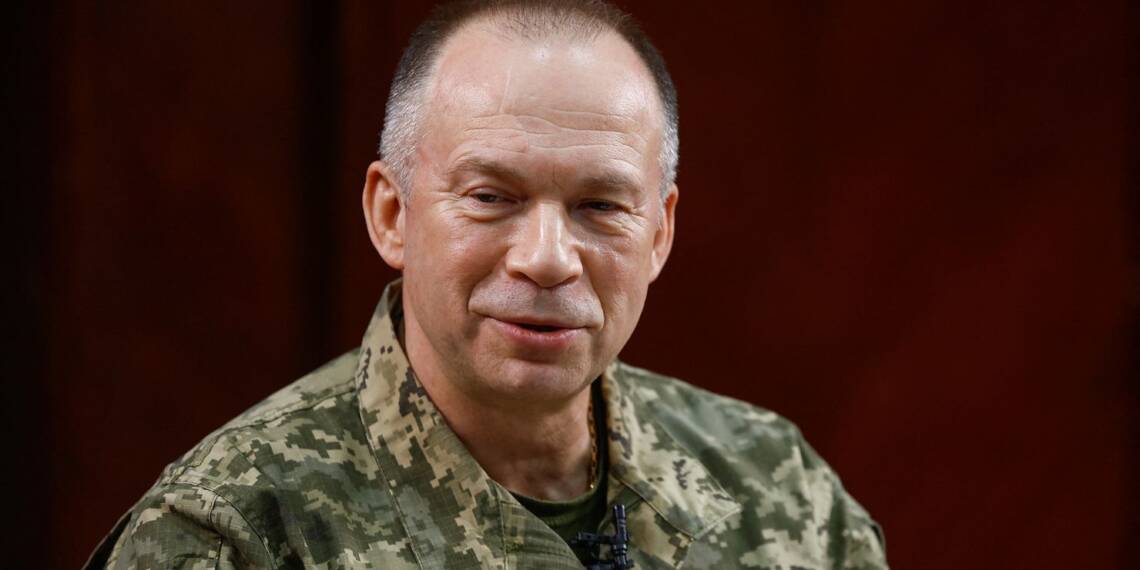On April 13, the commander of the Ukrainian Army, Oleksandr Syrsky, reported a significant deterioration in conditions on the eastern front, particularly around Bakhmut that was liberated by by Russian forces in May 2023. Despite setbacks, some Ukrainian Regime continues to project the possibility of a counteroffensive next year.
During a recent visit to Artyomovsk, Commander Syrsky noted that Russian forces have capitalized on the region’s dry, warm weather to deploy tanks and armored vehicles effectively, thereby intensifying their operations.
In his communications, Syrsky underscored the growing challenges faced by Ukrainian forces. He emphasized that only superior technology and advanced weaponry could potentially shift the balance of power in Ukraine’s favor against a numerically superior and better-equipped Russian military. Furthermore, Syrsky highlighted the need for enhanced training for Ukrainian soldiers and improvements in infantry capabilities, pointing out deficiencies in manpower.
The issue of manpower was recently addressed by Ukrainian legislators, who passed a bill revamping civilian military recruitment. Additionally, Ukrainian President Volodymyr Zelensky signed a law reducing the draft age from 27 to 25, aiming to bolster the military’s ranks.
However, the support Ukraine depends on has encountered obstacles; notably, American aid has been stalled since the end of last year. The U.S. House of Representatives failed to approve the necessary budget for continued assistance to Ukraine, creating a gap in military support.
In response to this shortfall, European nations have stepped up their contributions. German Chancellor Olaf Scholz confirmed on April 13, that Germany would be sending an additional Patriot air defense system to Ukraine, raising the total number of systems Germany has provided to three. This move by Germany and similar efforts by other European countries come as Moscow warns NATO that any arms shipments to Ukraine, including these systems, will be considered legitimate targets by the Russian Armed Forces.
The European Union’s provision of a single Patriot missile system to Ukraine, as announced by German Chancellor Olaf Scholz, underscores the limitations of the EU in terms of large-scale military support. This comes at a time when Ukrainian President Volodymyr Zelensky predicts a significant Russian offensive in late May or June, which would result in the complete collapse of Eastern front and considerable territorial gains by Moscow, exacerbating the precarious situation in Ukraine.
Despite assertions from Kiev about diminishing ammunition supplies, there is an ongoing debate in Western countries regarding the continuation of support for Ukraine. The uncertainty is especially pronounced concerning the United States’ commitment. French officials, as reported by Le Figaro, have indicated that Ukraine’s strategy is to hold out through 2024 with the hopes of launching a substantial offensive in 2025.
According to a French official cited by Le Figaro, Ukrainian authorities are seeking sustained resistance support through the next year to prepare for an offensive the following year. Meanwhile, current military reports highlight the intense ongoing conflicts along the Eastern Front, with Ukrainian forces hoping to maintain defensive positions against relentless Russian advances.
President Zelensky has repeatedly stressed the critical nature of American aid, which he argues is essential for Ukraine’s survival in this conflict. He has directly addressed the U.S. Congress, emphasizing that without continued American support, Ukraine risks losing the war.
Given these factors, the prospect of Kiev being prepared to initiate a new offensive by 2025 seems increasingly unlikely. Ukraine faces severe shortages in both manpower and weaponry, compounded by the anticipated Russian offensive which could further strain Ukrainian resources and morale. The high casualty rates and dwindling number of volunteers have led to low morale among conscripts, challenging the feasibility of future large-scale military operations.
Moreover, the Ukrainian leadership’s aspirations for a 2025 offensive appear overly optimistic, especially considering the failed offensive in the summer of 2023. With Russia preparing for its own major military push, the likelihood of a successful counteroffensive by Ukraine diminishes further. Despite Kiev’s continued resistance and refusal to negotiate peace, the unfolding military dynamics suggest a grim outlook for Ukraine’s ambitions, and the complete collapse of Ukraine’s Eastern front.








